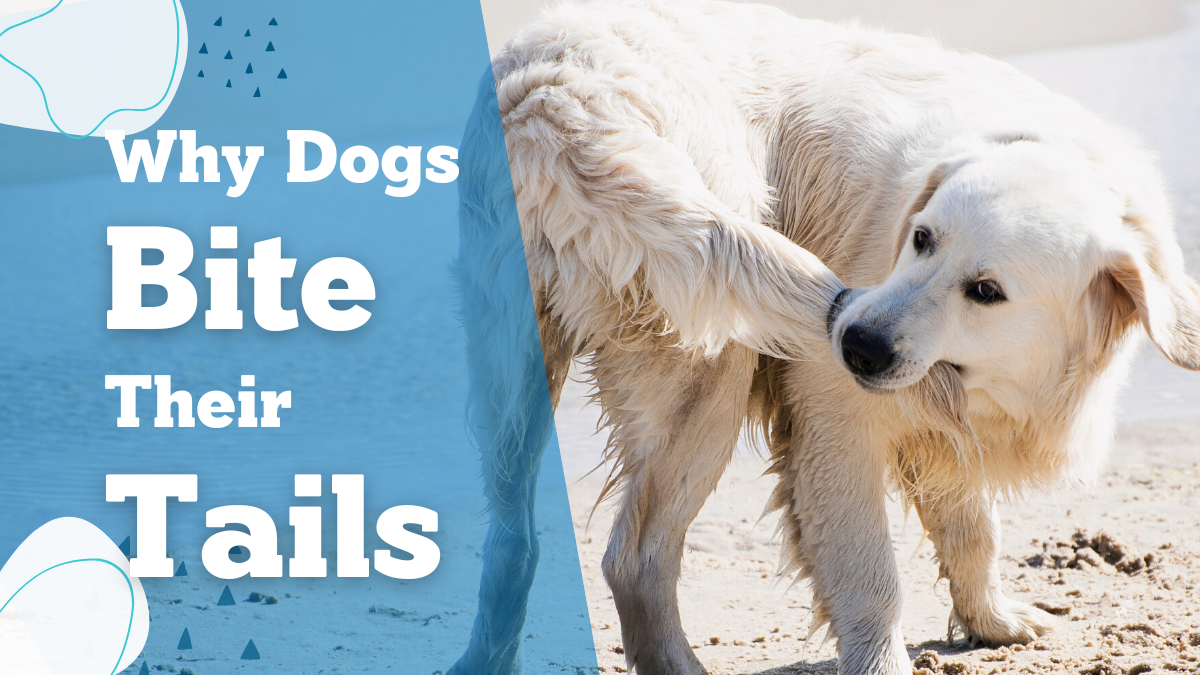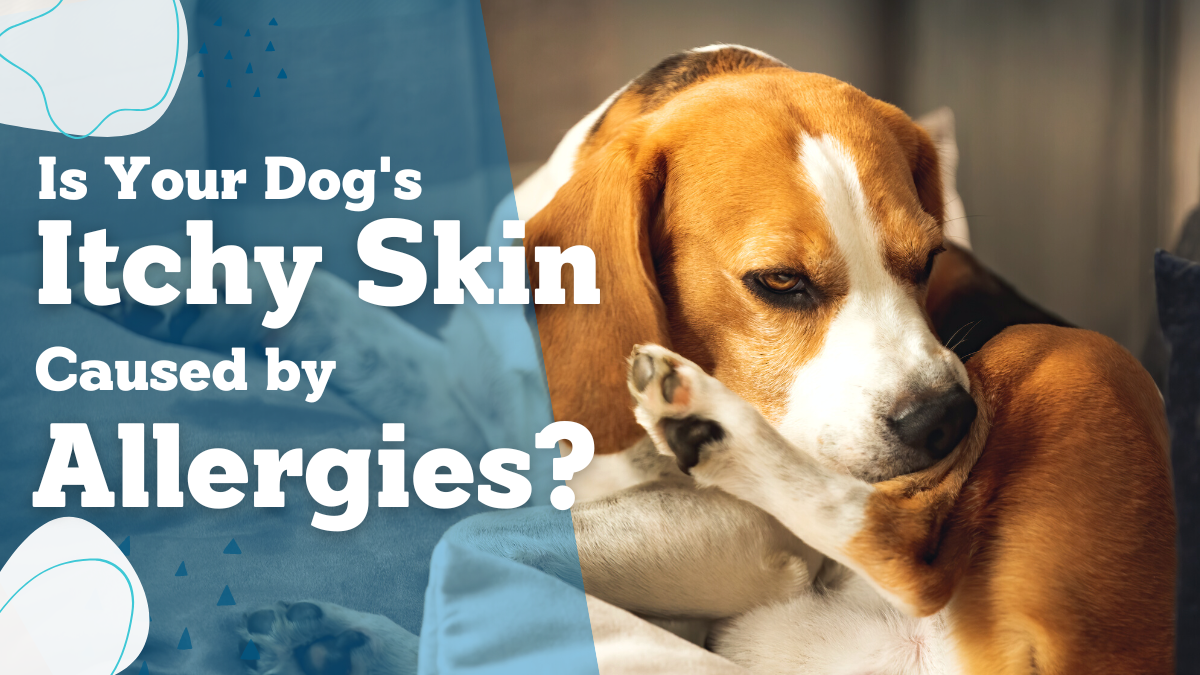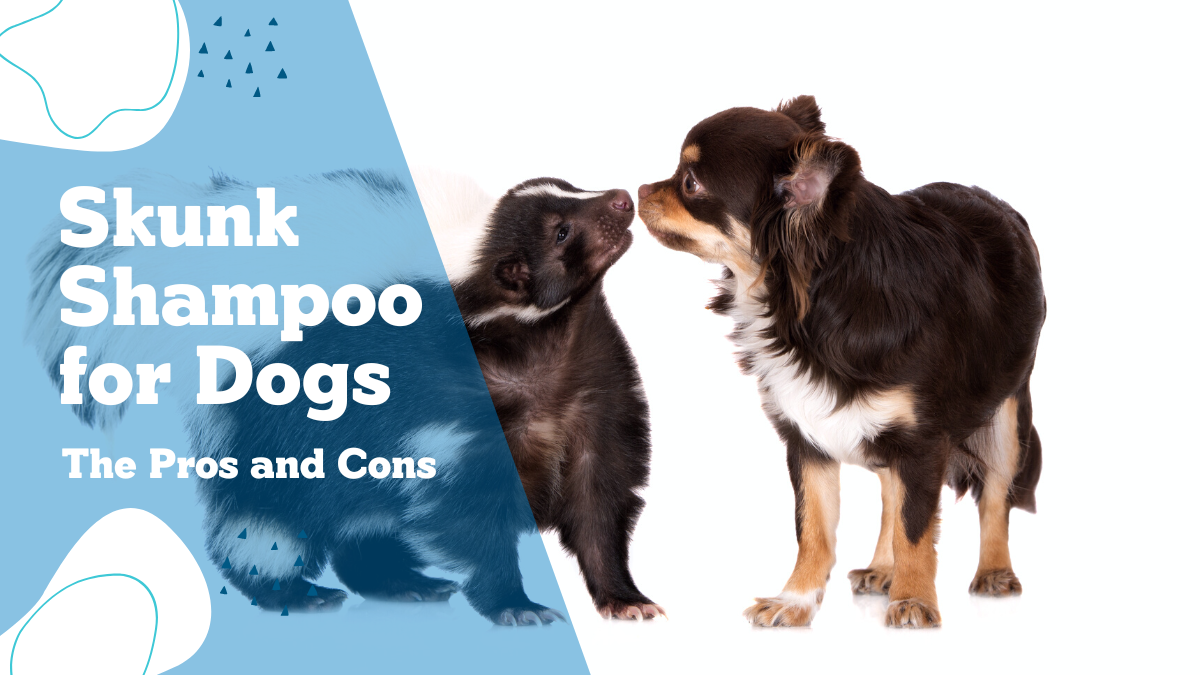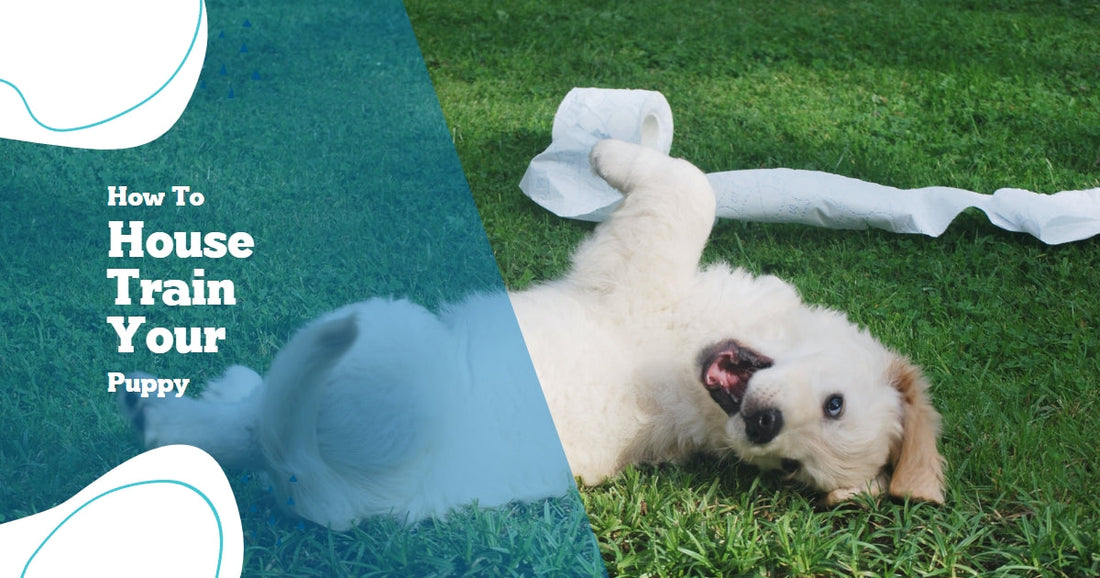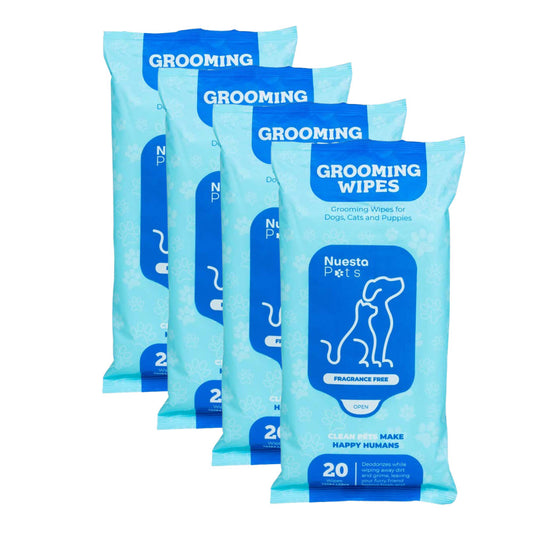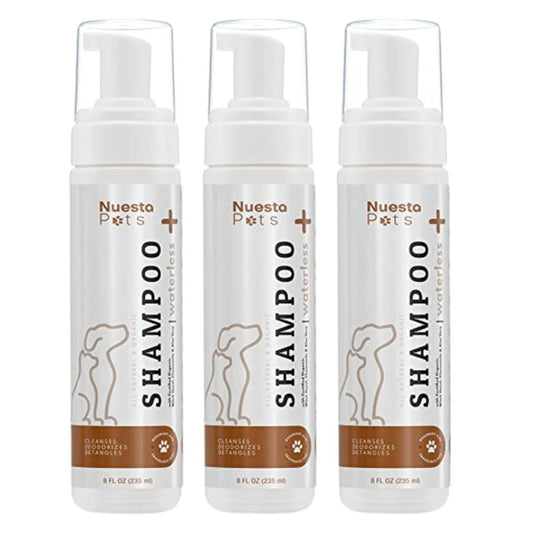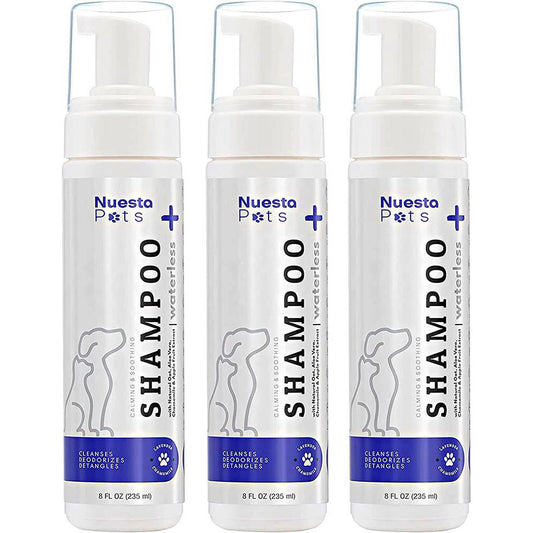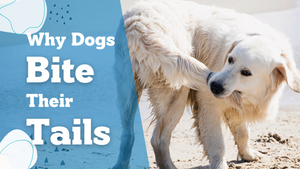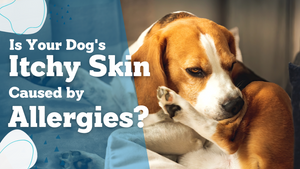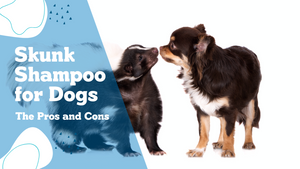Housebreaking a new puppy or adult dog is one of the most important things you can do as a new dog owner. Not only will it make your life easier, but it will also help young puppies and even an older dog adjust to their new home and family.
The key to success is to be consistent with your puppy and use positive reinforcement techniques.
In this article, we will cover all the tips and tricks for a successfully potty-trained dog so you can both be on your way to a happier, healthier home!
The basics of house training - puppy edition
Housetraining a puppy can be a daunting task, but it's important to remember that most dogs are eager to please and will learn quickly if you set rules and boundaries for them.
Puppies are not born knowing where to use the bathroom. With patience and some basic instruction, you can potty train your puppy to relieve himself in the proper place.
Dog owners that have just welcomed a new puppy, housetraining aka potty training may be one of your top priorities. Like with most things in life, there are some basic tricks to getting your dog potty trained quickly and effectively.
Here are five of the most important ones:
- Choose a designated elimination spot and consistent times for potty breaks
- Be consistent with your commands while potty training
- Immediately reward good behavior
- Don't punish accidents
- Be patient
Potty training 101 - How to House Train your Puppy
Follow these simple steps and you'll have your dog housetrained in no time!
Step 1: Establish a routine.
Puppies thrive on routine, so set times for feeding, to potty train, and playing.
Step 2: Choose a command.
When it's time to go outside to potty, use a specific word or phrase like "go outside" or "time to go."
Step 3: Give positive reinforcement.
When your puppy does his business outside, praise him and give him a treat. This will give a positive association to the good behavior and make him more likely to repeat it.
Step 4: Be consistent.
Puppies learn best when they are given consistent direction and rewarded for good behavior.
Step 5: Be patient.
Potty training takes time and patience, so don't get frustrated if accidents happen along the way. Just stay consistent and remain calm, and your puppy will catch on in no time.

Why it is important to housebreak - potty train a puppy as quickly as possible
Puppies are like babies in that they need to be potty trained as quickly as possible. If you don't housebreak them, they will learn to relieve themselves wherever and whenever they want. This can cause a lot of problems, both for the puppy and for you.
One reason to housebreak a dog quickly is to prevent behavioral problems from developing. If a puppy is not housebroken, he may start to exhibit problem behaviors such as chewing on furniture or they will go to the bathroom inside the house.
These behaviors can be difficult to break once they have been established, so it is best to prevent them from occurring in the first place.
Also, housebreaking your dogs will make your life much easier. A dog who is not housebroken can be a real handful and can make your life very stressful. Avoid this by taking the time to housebreak your puppy as soon as possible.
A few helpful tips:
- Take more frequent trips for potty time so they don't have to hold it for long periods
- Have a consistent feeding schedule
- Use Nuesta Pets Pee Pads (coming soon) to paper train them for when you're not home or they can't make it outside
- Use consistent training techniques. It will save you a lot of headaches in the long run!
How to set up a housetraining routine
House training a puppy with patience and a little planning can be very successful. The key to success is setting up a routine and sticking to it. Here are some tips on how to do that:
1. Choose a spot in the yard or house where you want your puppy to eliminate, and put newspapers or potty pads there. Make sure to take your puppy to this spot often, especially after meals, naps, and play sessions.
2. When your puppy eliminates, say a cue word like “potty” or “go” so he associates the behavior with the command. This should be different and right BEFORE and AFTER your dog eliminates (while you're outside) as opposed to the previous command that signals "it's time to go outside".
3. Reward your puppy with a treat and praise when he eliminates in the designated spot.
4. If your puppy has an accident, don’t punish him – just clean it up and try to prevent future accidents by keeping a close eye on him and taking him outside more often.
With patience and consistency, you can successfully house train your new pooch. Just remember to be prepared for accidents – they’re bound to happen from time to time, no matter how well you plan!

Take your puppy out frequently, especially after meals and naps
It’s important to take your puppy out frequently, especially after they’ve eaten or taken a nap. Not only is it necessary for their bathroom needs, but it also helps them become trained.
If you wait too long to take them outside, they may relieve themselves inside, and that can be difficult to clean up. In addition, taking your puppy or adult dog out frequently helps them get used to the sights and smells of the outdoors, which can be beneficial for their overall health and well-being.
Reward your puppy when he eliminates in the designated area
A well-trained puppy is a joy to own. One of the most important aspects of training is housebreaking or potty training your puppy. There are several ways to do this, but one of the most effective is to reward your puppy when he eliminates in the potty area.
One way to do this is to give your puppy a treat immediately after he goes potty. This will help to reinforce the desired behavior. Another way to reward your puppy is to give him some extra attention and playtime. This can be a great way to bond with your new furry friend while also teaching him what you expect from him.
Whatever method you choose, be consistent with it and be patient. Housebreaking a puppy takes time, but with a little effort, you will soon have a fully house trained pup that is a welcome addition to your home.
What to do when your puppy has an accident in the house
If your puppy has an accident in the house, there are a few things you can do to clean it up. First, grab a paper towel or a cloth and soak up as much of the urine as you can.
Then, grab your Nuesta Pets stain and odor eliminator. This stain and odor eliminator cleanses, sanitized, and deodorizes all in one easy step! Just spray directly on the affected area, let it sit for 5 to 10 minutes, and wipe, blot, or vacuum the area.
Nuesta Pets Stain and Odor Remover

How to deal with potty training setbacks
Dealing with potty training setbacks can be frustrating for both puppies and their owners. However, there are ways to overcome these problems and continue on the path to house-training success.
One of the most important things to remember is that accidents happen. Even if you have been successfully house-training your puppy for weeks or even months, there will likely be setbacks along the way. Do not get discouraged if your puppy has an accident – simply clean it up and move on.
If you find that accidents are happening more frequently, it is important to take a step back and reevaluate your potty training routine.
Are you providing enough opportunities for your puppy to go outside? Are you using a consistent cue or command at potty time? If you are unsure, it may be helpful to consult with a professional dog trainer or behaviorist.
Another common issue that can cause potty training setbacks is changing in routine. If there are changes in the household (such as a new baby or pet), this can disrupt your puppy’s regular schedule and cause confusion.
Try to keep things as consistent as possible during this time and be patient while your puppy adjusts to the new changes.
Finally, remember that every puppy is different and will learn at his or her own pace. Do not compare your puppy’s progress to that of other dogs – each puppy is unique and will learn in his or her own time.
Your pup will get it! Just be patient!

Set up a designated potty area for your dog to eliminate
In order to successfully potty train your dog, it is important to set up a designated area for him or her to eliminate. This can be a specific room in your home set up with Nuesta Puppy Pads (Coming Soon!), an outdoor space like a yard or patio, or even a designated spot in the garage or basement.
The most important thing is that the designated area be consistent – meaning that you always take your puppy to the same spot for their potty break. This will help your puppy learn to associate going potty with a specific potty spot, and eventually, he or she will learn to hold it until it's time for potty breaks.
If your dog eliminates in an indoor designated area, be sure to use Nuesta Pets stain and odor eliminator to clean up any accidents. This will help to remove any lingering smells that may attract your puppy back to the same spot to eliminate again.
Potty training can be a frustrating process, but by setting up designated areas, and potty break times for your puppy to eliminate, you can make it much simpler and more successful.

Feed your puppy on a regular schedule
One of the most important things to remember when potty training your puppy is to feed him or her on a consistent schedule. Most dogs should be fed twice per day – once in the morning and once in the evening. If possible, try to keep your puppy or adult dog on a regular feeding schedule.
In addition to a regular feeding schedule, it is also important to provide plenty of opportunities for your puppy to eliminate.
This means taking him or her outside regularly – at least every two hours – This will help to establish a routine so your puppy learns and makes it easier for him or her to predict when it is time to go potty.
Also if you need to go out of town during the house training process it is important to hire a professional pet sitter. Make sure they know the schedule you have in place.
By establishing a regular feeding and elimination schedule, you can help your puppy learn and make potty training much simpler.
Be consistent with your commands and rewards
When it comes to the way you train, consistency is key. If you give a command one day and don't follow through with a reward, most puppies may not understand what it is you want from them. The same goes for rewards - if your dog does something good, be sure to praise and reward them immediately so they know that they've done something you approve of.
Being consistent with your commands and rewards will help as your puppy grows to understand what it is you expect from them, and ultimately make the training process much easier for both of you.

Don't punish your dog for accidents - instead, redirect him to the designated area
If you’re like most people, you probably punish your dog when he has an accident in the house. It is common to put your puppy's nose or dog's nose near the mess. But did you know that punishment is one of the worst things you can do? It can make the problem worse.
Punishment doesn’t teach your dog what he should do instead; it just teaches him to be afraid of you. And that’s not going to help him learn to go to the bathroom outside. If you catch your dog not having bowel control, make a loud noise to startle him and then immediately take your dog outside.
If he goes, give him lots of praise. If you find a mess after the fact, there’s no need to punish him. Just clean it up and move on.
The best way to prevent accidents is to keep your puppy on a regular potty schedule. While constant supervision is not necessary with a new pet increased supervision is a must.
Take him out first thing in the morning, before and after naps, after meals, and before bedtime. And be sure to give him plenty of opportunities to go during the day.
Be patient with your puppy
Most people know that it's important to be patient with puppies. They're new to the world, and they're still learning about everything. But we also need to be patient with dogs throughout their entire lives.
Puppies are always learning, and they never stop growing and changing. That means that even when they're an adult dog, they can still be unpredictable. That's why it's important to always be patient with your dog, whether they are a puppy or an adult dog.
It's not always easy to be patient with a dog who is chewing on your favorite shoes or having an accident. But remember, they're still learning.
You can try baby gates to prevent them from accessing closets, the laundry room where they think the cat boxes are their treats, or areas that they view as fair game.
Every time you lose your patience with them, you're making it that much harder for them to learn what you want them to. So next time, take a deep breath and remember that they're just a puppy.
They'll make mistakes, but with your patience, they'll eventually learn to be the dog you always wanted them to be.
Spaying or neutering your puppy can help reduce accidents
Not only do you have to housetrain them and make sure they get enough exercise, but you also need to have vet visits about their health and having your dog spayed or neutered.
Many people don’t realize just how important this is. Spaying or neutering your puppy can help reduce accidents in the house, make them less likely to roam away from home, and even make them less aggressive.
If you’re not sure whether or not to spay or neuter your puppy, talk to your veterinarian. They can help you make the best decision for your pet.
Clean up any messes quickly and thoroughly
No one likes cleaning up dog messes, but it's a necessary evil. You can find all of your necessary pet supplies at a pet store. If you can't find your favorite Nuesta products in pet stores you can find them here at nuestapets.com.
Dog owners know that if they don't clean up any messes quickly and thoroughly, the smell will linger for days. And not only is the smell unpleasant, but it's also a health hazard.
That's why it's so important to have a good cleaning routine. Not only will it help keep your home clean and smelling fresh, but it will also prevent any accidents from happening in the first place.
With Nuesta Pets stain and odor eliminator, pet owners can rest easy knowing they have a safe and efficient way to clean up any messes during the training process.
Nuesta Pets Stain and Odor Eliminator
Unlike most others that mask odors, Nuesta Pets Natural Stain and Odor Eliminator contains naturally derived pineapple and papaya enzymes. These enzymes attack and destroy strong odors, urine, and most other everyday messes caused by cats and dogs.
Our pet stain and odor removers are great for everyday home use as a carpet cleaning solution, and litter box odor eliminator.
It helps to keep kennel and trash cans odor-free. It's safe to use on any surface including carpets, wood, tile, upholstery, and more. It has a soothing citrus aroma that kills the funk and is safe for you and your pets! So spray away to keep stains and odors at bay.

Crate training
While dogs aren't considered den animals a crate can make your dog feel safe and protected. To crate train your dog is one of the most important things you can do for your new furry friend. It helps with housebreaking, reduces bad habits, and makes travel much easier.
But it's not as simple as just putting your dog in a crate and leaving them there. There are a few key things to keep in mind when crate training your dogs.
First, it's important to choose the right crate. It should have enough room for the puppy to stand up, turn around, and lie down comfortably. If it's too big, he may use one corner as a bathroom and the other as a bedroom, which isn't what you want. If it's too small, he'll feel cramped and unhappy. As your dog grows you will have to adapt with many crates to suit their size.
Second, you need to introduce the crate gradually. Put it in a room where the dog spends a lot of time, such as the kitchen or living room, and put a soft bed or blanket inside for a comfortable sleeping area. Leave the door open so he can come and go as he pleases. Praise him when he goes in on his own.
Third, crate training is all about positive reinforcement. Whenever the puppy goes in the crate, give him a treat or toy. This will help him associate the crate with something good.
Fourth, don't leave your puppy in the crate for too long at first. Start with short periods, such as 10 minutes, and gradually increase it as he gets more comfortable. You can also cover the crate so as few lights as possible are showing and the dog will feel relaxed and comfortable.
Crate training takes time and patience, but it's worth it in the long run. With a little effort, you'll have a well-behaved pup who loves his safe space.

House training a puppy can be a daunting but ultimately rewarding task. Now you know all the best answers on how to house train your puppy! Remember to be patient and consistent with your training, and don't give up if your pup has an occasional accident - he'll get there eventually!
Love this Article?
Make sure to Bookmark "How to House Train Your Puppy" and Share with those in need!
Share:

